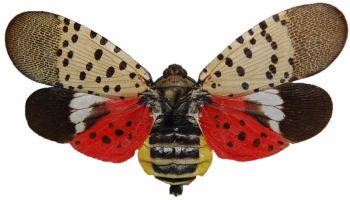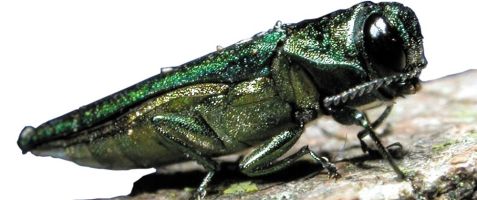How Old Should A Tree Be Before Pruning and Other Tree Trimming and Pruning Questions
Tree trimming and pruning are essential for tree health on a residential or commercial property. While trees in a forest may die without anyone noticing due to overgrowth or infections, in our neighborhoods, the health of trees has a significant and noticeable impact. A diseased branch could fall and harm our property or persons. A canopy that is too crowded can cause fungi to develop, harming the health and aesthetics of an area. Overgrown trees can also lower visibility from the street. Below, Stein discusses how old should a tree be before pruning and other frequently asked tree care questions.
Three Frequently Asked Tree Care Questions
With tree trimming and pruning in Wilmington, DE, being so necessary, we get many questions about the basics, such as how old should a tree be before pruning. The following are a few of the more frequently asked questions, their answers, and information about how our team can help improve the health and aesthetics of your yard.
How Old Should a Tree be Before Pruning?
Early and proper pruning is one of the most important aspects of tree care. Pruning young trees by removing broken or damaged branches helps prevent future issues. That said, over-pruning is just as bad as under-pruning. Young trees will require minimal pruning in their first two years, and a professional tree care service can ensure the tree matures appropriately.
However, if you have newly planted or transplanted a tree, limit pruning to only removing dead or broken branches. Full pruning, shaping, and trimming should wait until the second or third year when the tree fully recovers from the stress of being moved.
As mentioned, corrective pruning early on in a tree’s life cycle can prevent health issues as the tree grows and becomes mature. In addition, a mature tree pruned appropriately early in its lifespan will more likely have a strong branch structure, and the large limbs will not obscure streets or walkways or pose a danger to passersby.
What Are the Risks of Pruning a Mature Tree?

While pruning can benefit mature trees, risks are involved, especially if done incorrectly. Here are some of the critical risks to be aware of:
Over-pruning can be harmful to trees and can lead to the following issues:
- Reduced energy: Trees require their leaves for energy production through photosynthesis.
- Weakened branches: Improper pruning cuts lead to weak branches prone to breakage.
- Increased risk of tipping: Removing lower branches makes the tree top-heavy, which increases the risk of tipping.
- Sunscald: Direct sunlight on the previously shaded trunk can cause sunscald.
- Increased risk of disease: Large pruning wounds create entry points for pathogens and insects.
Improper pruning techniques can have the following adverse effects on trees:
- Flush cuts are cuts too close to the trunk that remove the branch collar, the natural barrier that helps the tree heal wounds and prevent decay.
- Tree topping is the practice of cutting off large branches at the top, disrupting the tree’s natural structure, weakening it significantly, and encouraging weak, fast-growing suckers that are prone to breaking.
- Dull or unsterilized tools can lead to uneven cuts, tearing bark, and spreading diseases.
Other risks of pruning a mature tree via DIY methods or without the proper tools, knowledge, and experience can lead to the following issues:
- Injury to the person pruning: Working with sharp tools and climbing trees requires proper safety gear and techniques.
- Property damage: Falling branches or equipment can damage structures or injure people nearby.
Remember, mature trees are valuable assets, and pruning should be done carefully. Consulting a professional arborist can help you make informed decisions about your tree’s health.
What Are Water Sprouts and What Causes Them?

Water sprouts are shoots from a tree’s trunk, branches, or latent buds. Some people confuse them with “suckers,” which are shoots that grow from roots or bases.
Another difference between water sprouts and suckers is the growth pattern. Water sprouts grow rapidly and vertically but do not bear flowers or fruit and can reduce airflow and light. Suckers grow slantingly or horizontally and might bear different flowers or fruit depending on the rootstock.
These water sprouts grow fast and often appear due to cuts that remove a branch bud tip. Tree topping, removing branches above a certain height, is an unhealthy practice that frequently leads to the formation of water sprouts. These sprouts are less than ideal aesthetically and can sap energy away from the rest of the tree.
When Should I Prune?
In addition to knowing how old should a tree be before pruning, homeowners often wonder what the right time to prune is. The best time to prune will depend upon the type of trees you have and the desired outcome of tree trimming and pruning in your Wilmington, DE neighborhood.
In general, pruning during winter dormancy is ideal as the risk of infection is reduced and the practice encourages new early spring growth. The lack of leaves during winter also helps tree care specialists identify which branches need pruning and allows for better pruning cuts. However, other times are appropriate if the pruning is performed correctly. A professional, qualified tree care service will advise you on safe times for trimming your trees and shrubs.
Are There Any Tree Species That Require Early Pruning?
Some tree species require pruning at an earlier age than others. This early pruning ensures proper growth patterns, removes potentially hazardous limbs, encourages a strong structure, and improves the tree’s overall health. Here are a few examples:
- Fruit Trees (e.g., apple, peach, cherry): Pruning is crucial for young fruit trees to support fruit production. This typically starts 1-2 years after planting.
- Ornamental Trees (e.g., Japanese Maple, Crepe Myrtle): These trees may require early pruning to shape the tree aesthetically. Pruning can begin within the first few years after planting.
- Fast-Growing Shade Trees (e.g., Silver Maple, Willow): These can quickly develop weak wood and poor branch structures, necessitating early pruning to remove competing leaders and weak limbs.
- Conifers (e.g., Pine, Spruce): While many conifers require minimal pruning, some may need early pruning to remove dead or diseased branches or to shape the tree for landscape purposes.
The pruning process can differ widely based on the tree species, condition, location, and purpose. Seeking professional advice from an arborist or can provide tailored guidance for particular trees and climates.
Stein Tree Service Offers Skilled Tree Trimming and Pruning in Wilmington, DE
Have more questions about how old should a tree be before pruning? Our experienced certified arborists and tree care specialists are dedicated to exceptional tree care, and we offer free consultations in Delaware and Pennsylvania. Contact us at Stein Tree Service to learn more about the best tree trimming and pruning practices in Wilmington, DE, and surrounding areas.



